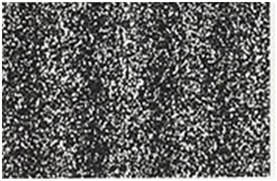 |
| Music |
| Computing |
| Info Arch |
| Theory |
| Practice |
| Glossary |
| Index |
Metaphor |
|
In literature a device where one word is considered as being or equal to a second object in some way. When discussing complex technical issues a good metaphor helps comprehension.
Since information architecture is almost always dealing with situations that are not widely understood it is crucial to select suitable metaphors when introducing new topics.
Stories for children
When comprehending complex situations it is often valuable to picture the system as though it were behaving in a simple way. The author Terry Pratchett has coined a phrase for this, he calls such metaphors "stories for children". This comes from the observation that when explaining situations to new learners it is common to tell a simple "story" about what is happening, the listener will initially accept this over simplified explanation and use it to as the basis for further thought. However at some point they will notice that the simple story breaks down in some situations and, once they reach that realisation, will demand a better explanation. This will commonly take the form of a new "story" and so the cycle starts again.
The key point here is that these metaphors are crucial aids in teaching, without them we wouldn't reach the level of comprehension that allows us to notice the "odd behaviour" of the system. So inventing powerful "stories for children" is a critical element in discussing complex situations.
Key Metaphors
There are a wide range of valuable metaphors that can help explain situations to clients:
- Red Queen Situation: A situation where constant striving for improvement just maintains the status quo
- Win Win Situation: A situation in which each participant can benefit without anyone having to lose
- Zero Sum Game: A situation in which one person's gain is exactly matched by another's loss
- Tragedy of the Commons: A situation where individuals acting independently in their own self-interest can ultimately destroy a shared limited resource even when it is clear that it is not in anyone's long term interest to do so
Limits of metaphor

There are a number of examples where good metaphors simplify the understanding of complex ideas, however it is important to understand the point at which the metaphor breaks down. Consider an example from Physics, the behaviour of light. Newton thought that light was a stream of tiny particles, he called them "corpuscles", in contrast his contemporary Robert Hooke (and later independently Christiaan Huygens) thought that light was a wave. In the 19th century the fact that wave theory explained diffraction and some accurate measurements of the speed of light in dense media meant that the "corpuscles" theory of light was abandoned. Then in 1905 Einstein claimed that assuming light was a stream of particles was the only way to explain some experimental results.
In fact it was later realised that the "Double Slit" experiment shown on the right proved that both views were wrong. The light intensity can be turned down until there is only ever a single photon in the experiment (as illustrated by the individual dots) but the interference patterns still emerge, showing that the single photon interferes with itself.
This case clearly illustrates that there are some occasions when treating light as a wave is the best metaphor, and others where it is best thought of as being a particle. But both can only be used in a limited set of situations and the reality is that neither is "really" true.
Links to this page
The following pages link to here: Blackboard, Game Theory, Information Theory, Pin Factory, Prisoners dilemma, Red Queen Situation, Software, Spreadsheet, Tragedy of the Commons, Win Win Situation, Zero Sum Game